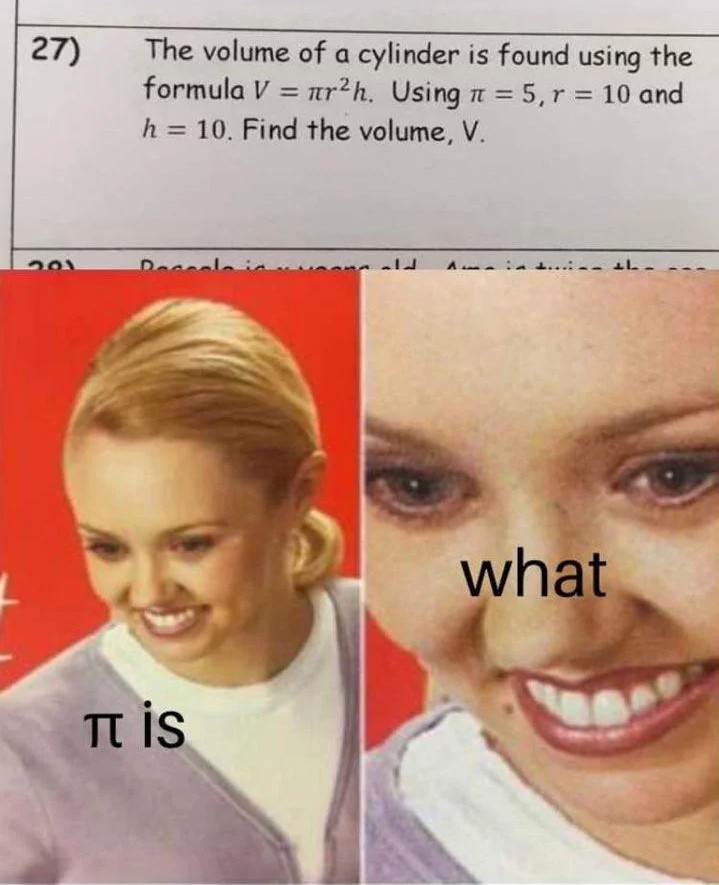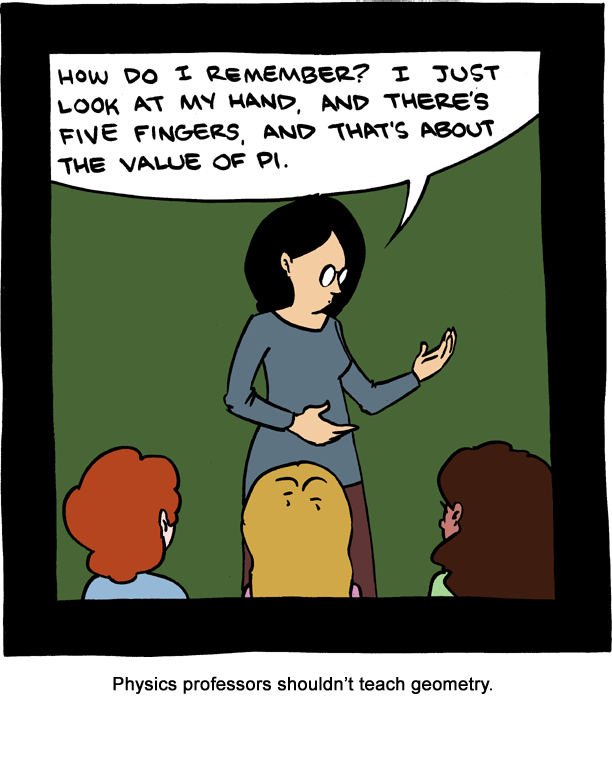There are people that think this post is wrong because the equation is wrong or due to a lack of units
The equation for cylindrical volume is correct (circular area multipled by height).
And the units are unimportant (can be described as cubed units)
The issue is that Pi is a constant. Constants and variables are different things.
Other examples of constants: 1, 24, 7, -1 ... Etc.
Saying Pi = 5 is like saying 1 = 5 ... Both Pi and numbers like 1,2,3, etc. have a constant (non-varying) value.
You can't reassign a value on a constant. It's like me sticking up 3 fingers and claiming there are 5 fingers there.


